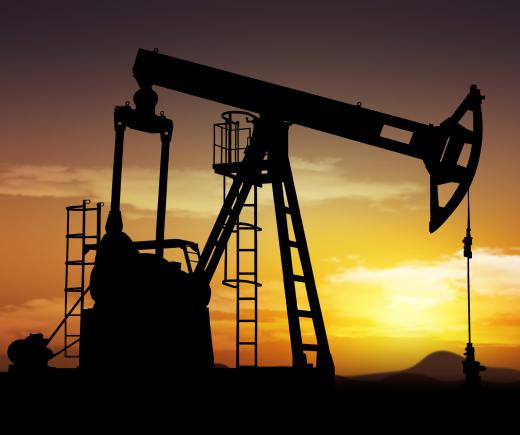A pump jack is a device used in oil production when the pressure inside a well is not sufficient to force oil to the surface. The pump jack is run to physically extract oil for use. Pump jacks were historically used on wells with low production levels, and can be seen dotting the landscape in many regions where oil wells have been dug. The distinctive appearance of the pump jack has become iconic and these devices are often used as symbols of the oil and gas industry, including on some company logos.
Known by names like “nodding donkey,” “grasshopper pump,” and “thirsty bird,” the pump jack consists of a long beam moved by an external power source. As the end of the beam rises and falls, the weighted end dips in and out of the well to extract oil. The other end is connected to a pulley system that is attached to the power source, providing continuous movement of the pump jack while it is turned on.

The same basic mechanics can also be seen in the design of some hand pumped wells, with a human being serving as the power source. Pump jacks can run on generators, as well as central power supplies. In large oil fields, pump jacks can be strung together along a power connection to access a central source of energy. Field workers maintain the devices, providing lubrication and replacing worn out parts.
These devices may not necessarily run full time. Production can be adjusted in response to changing oil prices and other factors, and in addition, some wells need to be allowed to rest to bring the levels of oil up high enough to reach with a pump. Typically, the pump jack extracts a solution of oil and saltwater, along with other impurities, and if a well is worked too hard, the level will fall below the reach of the pump. The ability to adjust production levels with a pump jack allows field workers to control how much oil is extracted, and when.
Once pulled out of the ground with a pump jack, the oil can be moved to containers for shipping and eventual treatment. In the treatment process the impurities will be removed and the oil will be graded and subjected to a series of refinery processes to produce different oil and gas products. The grade of the oil depends on a number of factors, with higher graded oils generally being more valuable.
Ever since she began contributing to the site several years ago, Mary has embraced the exciting challenge of being a About Mechanics researcher and writer. Mary has a liberal arts degree from Goddard College and spends her free time reading, cooking, and exploring the great outdoors.

